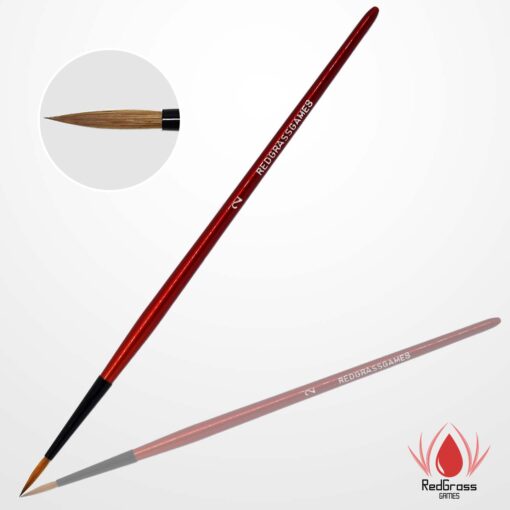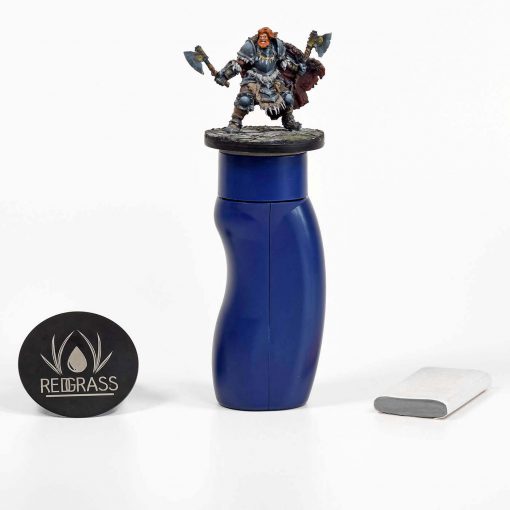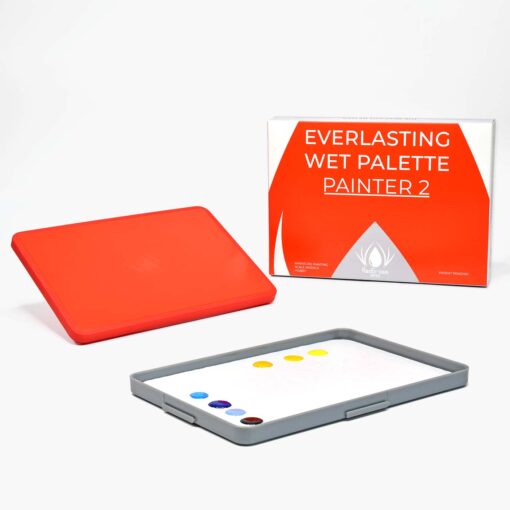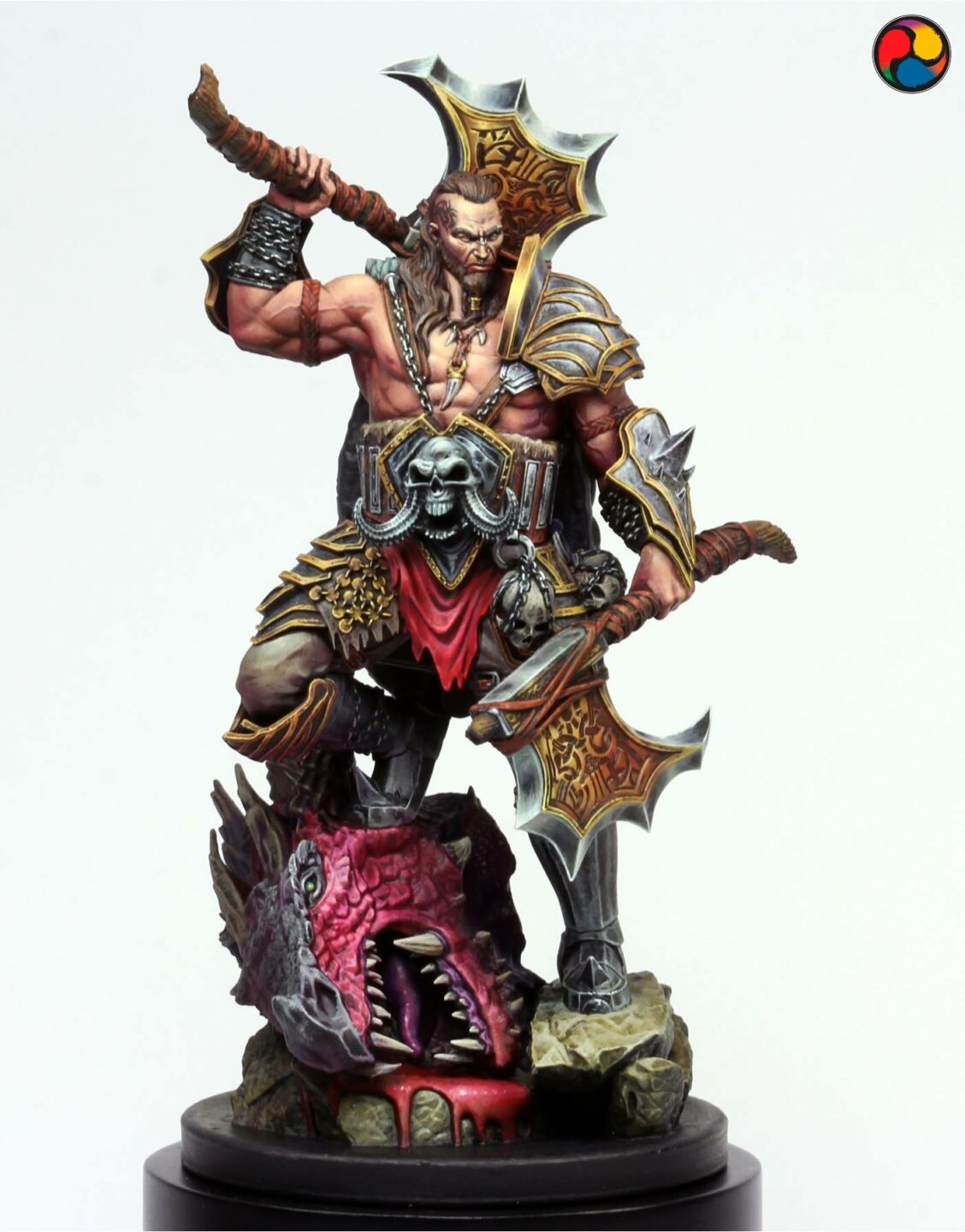
How To Glaze Miniatures? A Miniature Painter’s Guide!
If you’ve heard of “glazing,” you might first think of classic paintings or delicate ceramics. But for those in the know with miniature painting, glazing is our secret weapon.
It’s not just some borrowed term; it’s a pivotal technique we use to give our miniatures that wow-factor. With glazing, we can infuse a touch of realism and depth that takes a piece from looking good to truly standout.
So, whether you’re a seasoned miniature enthusiast or just starting out, exploring glazing could be the golden ticket to upping your painting game.
Table of Contents
What is Glazing?

Glazing is more than just thinning paint. It’s a precise technique where you apply multiple layers of very diluted paint to create transitions and blends. But this isn’t about randomly adding water to paint. It’s a methodical process. With each controlled layer, colors begin to blend and gradients emerge. Over time, the right application can give miniatures depth and smooth transitions that elevate the final look.

Glazing – What Is It Used For?

Glazing in miniature painting is truly magical because of its adaptability. Not only is it used to perfect those smooth transitions and blending, it’s a go-to when aiming to merge two colors seamlessly. By layering thin applications where colors converge, artists achieve flawless gradients. Furthermore, when applied over broader areas, glazing introduces a depth that breathes life into the miniature. Another perk? It works as a filter, harmonizing diverse tones on a model for a unified appearance.
How do you get a glaze consistency?

Achieving the right consistency is crucial. Start with one drop of paint and dilute it with two drops of water. For those looking to elevate their glazing game, using a glaze medium in the same dilution ratio can be a game-changer and give you more control. This is because it ensures the pigments stay uniform, even when thinned out. Aim for a consistency reminiscent of milk. Not sure if you've got it right? Try it on your thumb or palette. What you're aiming for is a near-transparent sheen, just retaining a whisper of the original colour.
How To Glaze Miniatures?

So how do you glaze?
Glazing can be used to tint a painted area to create tonal variation, and has been used this way in traditional painting styles for centuries. A great element to use this with is skin which has many different shades and tones depending on the environmental reflections, health of the person, their natural skin tone, etc. Therefore, to create a realistic look these need to be replicated and using glazes is a great way to achieve this!
Want to learn how to paint this way? Here’s a step-by-step:
Painting and Preparing the Area:
- Base Paint: Paint the area with your chosen base paint and layers. Filters will be applied on top of these.
- Varnish Layer: If you want protection for your current paint job and ease in correcting glaze mistakes, apply a layer of varnish.
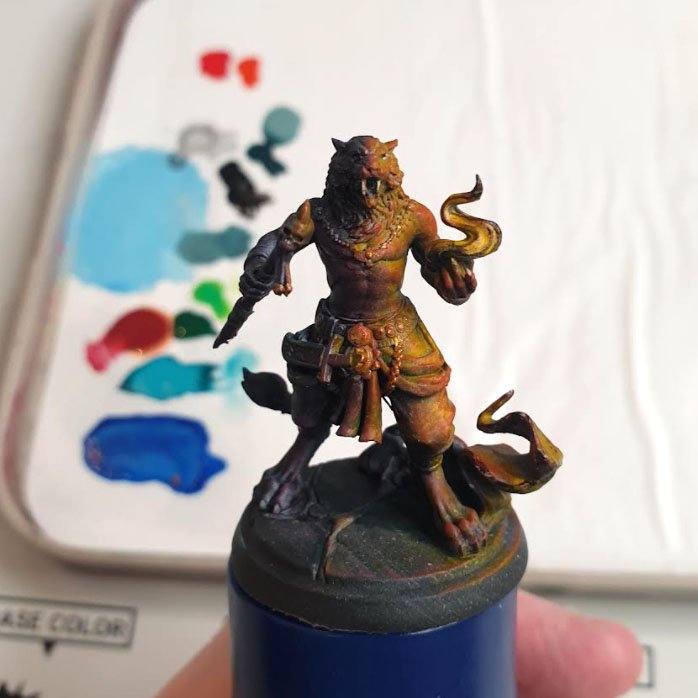
Mixing Glazes and Choosing Tones
Decide on Tones: Choose the colors you want as tones. Common choices include purples, greens, oranges, and magentas.
Option A: If you’re comfortable mixing and diluting your own glazes:
Use paints like Xereus Purple, Caliban Green, Troll Slayer Orange, and Screamer Pink.
Option B: If you’re unsure about mixing or prefer ready-made paints:
Consider Contrast Paints such as Luxion Purple, Biel-Tan Green, Fuegan Orange, and Carroburg Crimson.

Applying the Glazes
Glaze Application: Sparingly apply the tones. It’s easier to add more later than to remove excess.
As a guideline, use purple and green glazes in the recesses and oranges and magentas on the lighter areas.
Adjusting Tones for Desired Look
For a warm or flushed skin tone: Use magenta, orange, or cherry red to enhance brightness.
For a colder or shadowy environment: Use dark blue, purple, and dark green to capture that mood.

As an example, the Gotrek figure in the image above has dark blue glazed into the recesses especially around the armpit. This shows what kind of look it creates – subtle but distinct!
Curious about more advanced applications of glazing techniques?
Check out our tutorials on how you can use glazing to create NMM or how glazing can be utilized to paint light reflections – we also have many other tutorials and interviews, which we recommend you check out!
What paints should you use?
Any acrylic paint can, when thinned enough, be used as a glaze. All brands can be used, but do require different levels of thinning depending on the properties of their paint – as a general guide, for thicker paints then you should thin them a little more to get the consistency you are looking for.
Specific ‘glaze’ paints are made by some companies such as Vallejo, and these are pre-thinned for you. It can save some time and be more convenient to use these, but the number of available shades is limited. Alternatively you can also use washes as a glaze if you use a small amount and wick excess from the brush.
Another option is making your own – you can make your own glazes using inks and there are many tutorials on Youtube and blogs on how to do this.
So you can make a glaze in any shade you want!

Any acrylic paint can, when thinned enough, be used as a glaze. All brands can be used, but do require different levels of thinning depending on the properties of their paint – as a general guide, for thicker paints then you should thin them a little more to get the consistency you are looking for.
Specific ‘glaze’ paints are made by some companies such as Vallejo, and these are pre-thinned for you. It can save some time and be more convenient to use these, but the number of available shades is limited. Alternatively you can also use washes as a glaze if you use a small amount and wick excess from the brush.
Another option is making your own – you can make your own glazes using inks and there are many tutorials on Youtube and blogs on how to do this.
So you can make a glaze in any shade you want!
Redgrass painting tools will help you try glazing!
Looking for the ideal tool for crafting the perfect glaze? The V2 Wavy, seamlessly connecting to V2 Wet Palettes, ensures you achieve the optimal consistency every time.
Experience the magic of Redgrass Kolinsky brushes. Not only can they hold an impressive amount of paint, but they also promise a flawlessly smooth brushstroke.
Tired of accidental spills ruining your workspace? When creating glazes from washes, shades, or contrast paints, rely on the ‘Anti-Spill’ Pot Holder accessory. Designed to fit your V2 palette, it prevents those frustrating nuln oil spills and keeps your hobby space pristine!
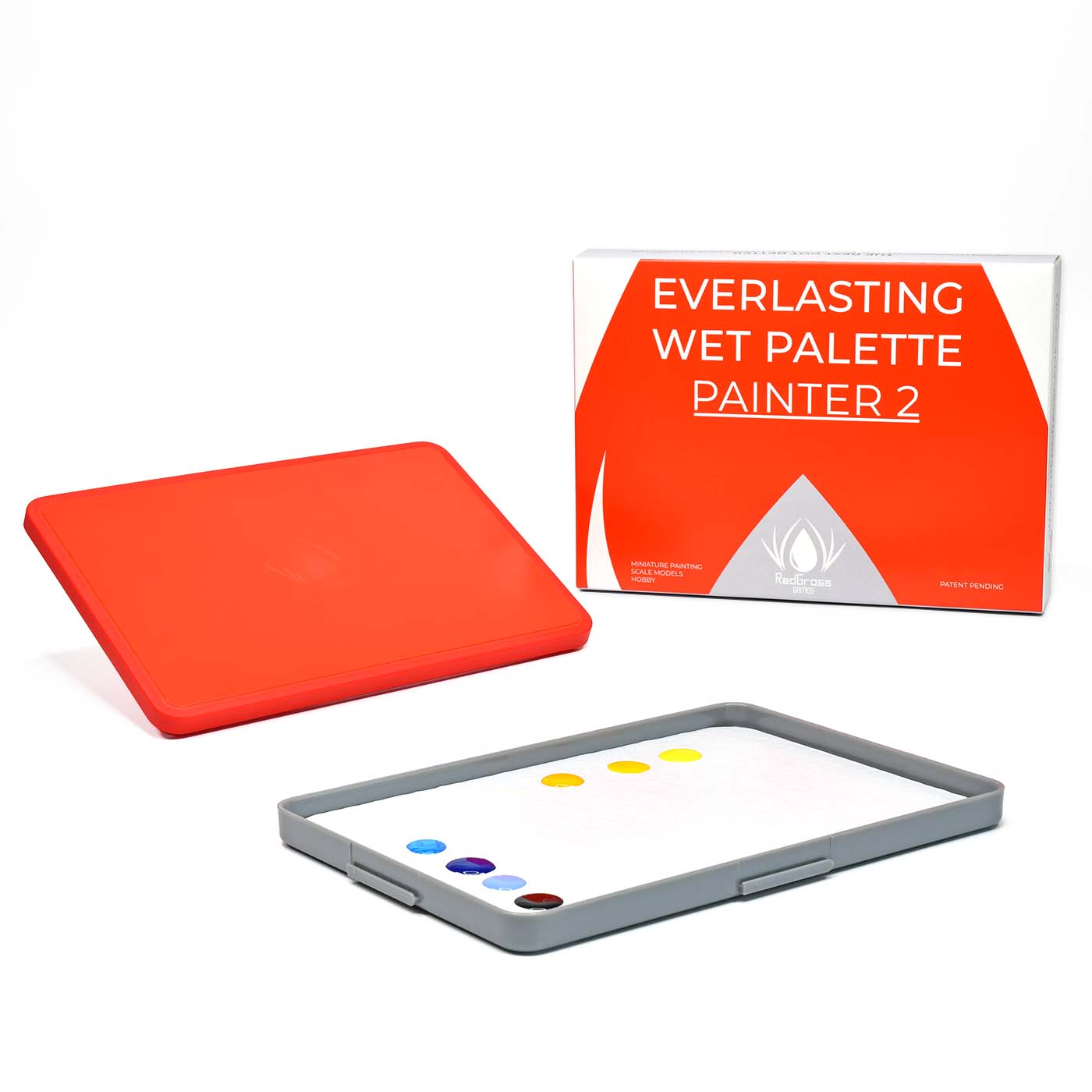
BORN ON KICKSTARTER
The Everlasting Wet Palette v2 was created in 2021. At the time, it was the most successful Kickstarter campaign for miniature painting (and it probably still is). 13954 backers helped us make this v2 project a reality. As a result, RGG wet palettes are the most popular palettes for acrylic paints, gouache paints and miniature painting.

